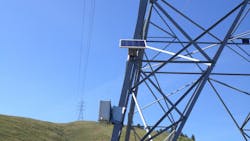Grid-Enhancing Technologies Can Expand Capacity: INL
A case-studies report released last week by the Idaho National Laboratory shows utilities can use new technologies to expand the capacity of existing systems, accommodating increases in renewable energy and customer demand.
The technologies provide potential to increase renewable energy penetration at lower costs, as well as provide opportunities to delay large infrastructure upgrades, extending the life of existing systems.
"Basically, it’s technology that allows utilities to squeeze more juice down the electric grid, rather than build more lines," said Rob Schaerer, a senior project engineer for Hailey-based POWER Engineers Inc. "Few utilities have even tested these technologies, let alone implemented them. The good news is this document can assist utilities with the adoption of these new technologies."
The report addresses two types of grid enhancing technologies, or GETs. The first is dynamic line rating, or DLR, which is hardware or software calculates the thermal limit to determine the capacity of existing lines based on real-time or forecasted weather conditions. This often allows for limits above static ratings, allowing for transfer of additional energy.
The second, power flow controllers or PFCs, push or pull power, shifting the flow of power across a mesh network and helping to balance overloaded lines and underutilized corridors within the transmission network.
POWER worked with INL on the initial set of standards for the first phase of the GETs study. POWER and INL will kick off real-world testing of the equipment at the lab site within the next few weeks.
The DOE has stated that the U.S. needs to expand its transmission capacity 60% by 2030 to meet the demands of electrification—cars, heating, and other functions being run by electricity instead of fossil fuels—and more renewable energy coming online. That expansion will require advanced technologies such as GETs to quickly reduce congestion on existing lines and improve the cost efficiency of bringing energy to customers.
"It's often cheaper to buy the equipment than to rebuild a line, or build a new one," Schaerer said. "If you can get more capacity, maybe you can push the need for a new line down the road."
Schaerer said the technology will be useful in the long-term as an effective way to help utilities reach clean energy goals—but testing will be key to helping utilities learn the best way to reap the benefits.
“The INL’s gathered a ton of information and useful data,” he added. “The testing will help us sort out the real-world aspects involved with actually installing GETs on the grid.”
POWER Engineers is a proud partner of the Idaho National Laboratory’s Transmission Optimization with Grid Enhancing Technologies (TOGETs) project, funded by the U.S. Department of Energy’s (DOE’s) Office of Electricity (OE) and Wind Energy Technologies Office (WETO).
